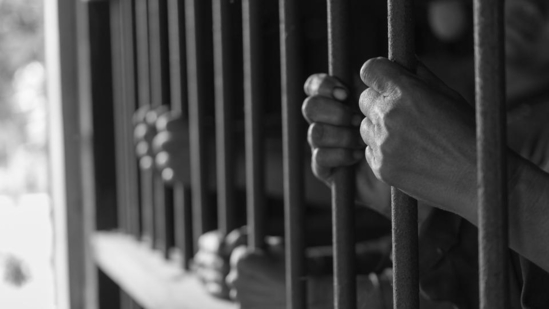Too many undertrials in jails raise questions
Prisons are overcrowded not because they are full of wicked criminals. But because two-thirds of people in jail are undertrial prisoners
There are 1,319 prisons across the country. At the end of 2021, overall occupancy stood at over 130% with one in four jails recording occupancy rates of 150% or higher and some jails totting up overcrowding of 400%. Prisons are overcrowded not because they are full of wicked criminals. But because two-thirds of people in jail are undertrial prisoners — those awaiting the completion of investigations or trial, people who may or may not have done anything wrong but are made to hang around while the process around them putters on.

Undertrials constitute 77% or three times the number of convicts. Prison Statistics India 2021 records that out of 5,54,034 prisoners, 68% belong to Scheduled Castes, Scheduled Tribes, and Other Backward Classes.
Responding to the obvious injustice of the situation, the National Legal Services Authority on September 18 relaunched a special nationwide campaign to reduce the number of undertrial prisoners. At the launch, Justice Sanjay Kishan Kaul exhorted the Supreme Court (SC)’s own special creation, the Undertrial Review Committees to urgently identify undertrial prisoners eligible for bail and pressed magistrates to modify conditions so that liberty rather than pre-trial detention is the norm.
In the same vein, the Union home ministry recently framed new guidelines and urged states and Union Territories to support economically weaker prisoners who are behind bars only because they have no means to pay their fines or because they cannot afford to secure bail for their release. With some Central funds behind it, a standard operating procedure named “Support for Poor Prisoners” has been instituted.
Earlier, during the Covid-19 pandemic, the need to create physical distance in cramped jails prompted the SC to direct the setting up of high-powered committees to identify prisoners who could be released even temporarily on interim bail and emergency paroles. Undertrial Review Committees (UTRCs) were ordered to double efforts and meet weekly instead of monthly. By the end of the first wave of the pandemic, more than 61,000 prisoners were released and occupancy was down by just over 15%.
However, by the second Covid wave in 2021, prison administrations were once again struggling with too many inmates. NCRB’s Crime in India 2021 reveals that police had made seven lakh more arrests than in the previous year. Moreover, a study of 19 states recorded patchy compliance with UTRC mandates. Overall prison occupancy rates that had fallen to 118.5% in 2020 had shot up to 130% plus by 2021.
It took a special campaign between July and August 2022 by the National Legal Aid Authority to get another nearly 37,000 undertrial prisoners released and bring the overcrowding down from 130% in 2021 to 124.3%. In a rules-based system like ours, punishment is expected to come at the very end of a strict fair trial process. Yet today, 77% of the prison population are undertrials, indicating that the loss of liberty is becoming the default position.
The need to stem this trend has led to the making of many laws, schemes, and institutions. The National Legal Aid Authority has now augmented its panel lawyer-based representation with new offices manned by defence counsels providing dedicated free legal representation. Magistrates are constantly urged that “bail, not jail” is the dictum they must follow in addition to having powers under the Probation of Offenders Act, 1958 to let off, under supervision, first-time offenders charged with lesser crimes with a warning to be of good conduct. Mandatory bail provisions under the Code of Criminal Procedure are also available to prevent undertrials from remaining in prison for prolonged periods. Technology-based tools such as electronic transmission of bail orders from the court directly to prisons have recently been brought in to prevent delays in paper-based procedures.
Yet, the problem persists and at 4.3 lakhs (2021), the number of undertrials has doubled since 2010. The Special UTRC Campaign 2023 signals a renewed determination to tackle the problem.
Maja Daruwala is chief editor and Nayanika Singhal is senior researcher with India Justice Report. The views expressed are personal
All Access.
One Subscription.
Get 360° coverage—from daily headlines
to 100 year archives.



HT App & Website







